Excel in HR: Mastering Excel Formulas & Functions for HR Professionals

Excel in HR is now an essential tool for managing employee data, streamlining processes, and generating insightful reports. Whether handling payroll, attendance tracking, or performance analysis, HR Excel skills provide professionals with powerful formulas, functions, and shortcuts that save time and boost productivity.
In this blogpost, we’ll explore a complete HR Excel guide, covering must-know formulas, data management tips, and best practices to help you become more efficient in your HR role.
Key Excel Functions for HR Tasks
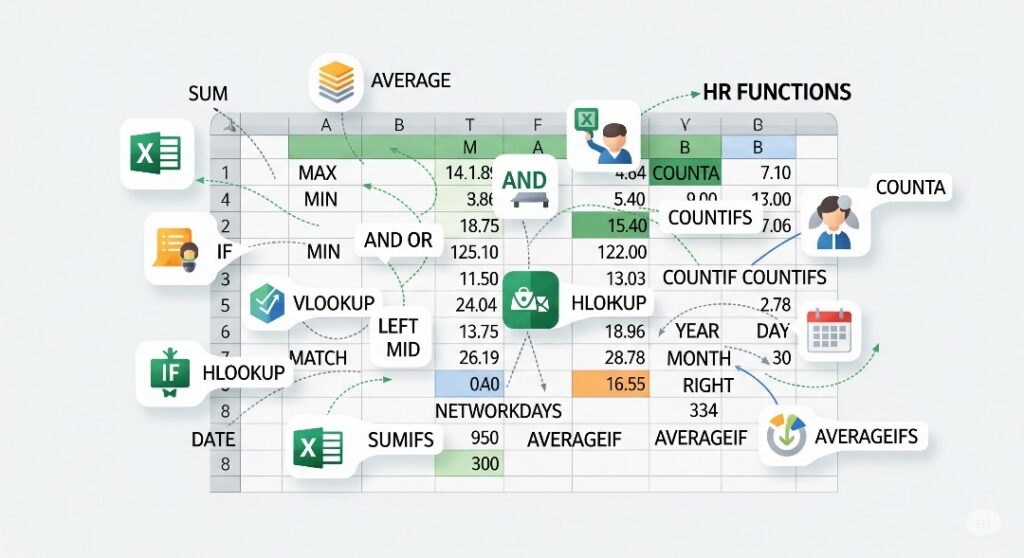
- Basic Arithmetic Functions
SUM,AVERAGE,MAX,MIN– Quick calculations for salaries, bonuses, and work hours.
- Counting Functions
COUNT,COUNTA,COUNTIF,COUNTIFS– Track employee attendance, leave records, or training participation.
- Logical Functions
IF,AND,OR– Build conditional statements for payroll deductions, allowances, and eligibility checks.
- Lookup Functions
VLOOKUP,HLOOKUP,INDEX,MATCH– Find employee details, job titles, or department codes with ease.
- Text Functions
LEFT,RIGHT,MID– Extract employee ID numbers or format names consistently.
- Date Functions
DATE,YEAR,MONTH,DAY,NETWORKDAYS– Calculate tenure, leave balances, or payroll periods.
- Conditional Functions
SUMIF,SUMIFS,AVERAGEIF,AVERAGEIFS– Summarize salary data by department, role, or seniority.
Shortcuts That Boost HR Efficiency
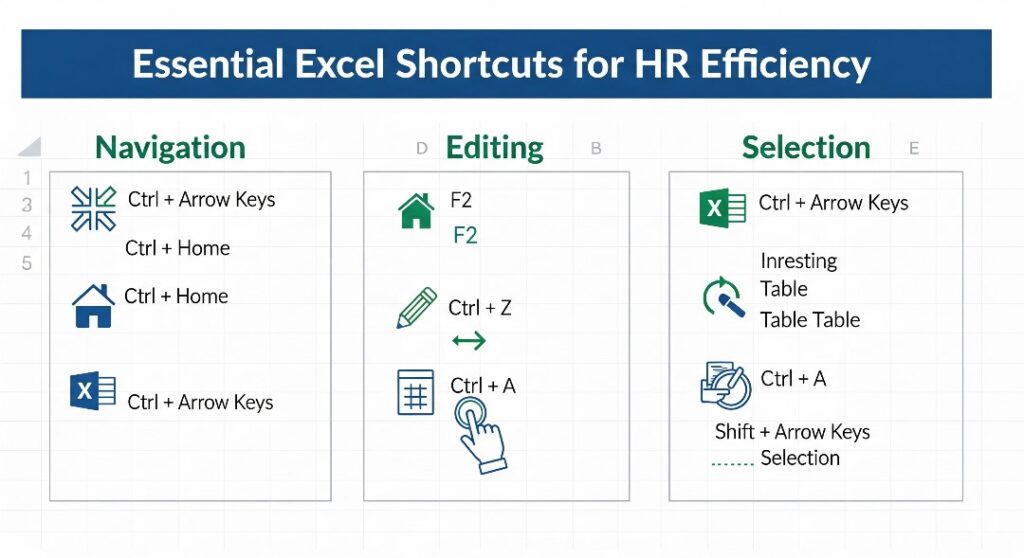
- Navigation: Quickly jump across large employee databases.
- Editing: Copy, paste, undo, and redo in seconds.
- Selection: Highlight entire rows/columns or specific ranges for fast updates.
These shortcuts save hours of manual work, allowing HR teams to focus on strategy.
Smart Tips for Managing Employee Data
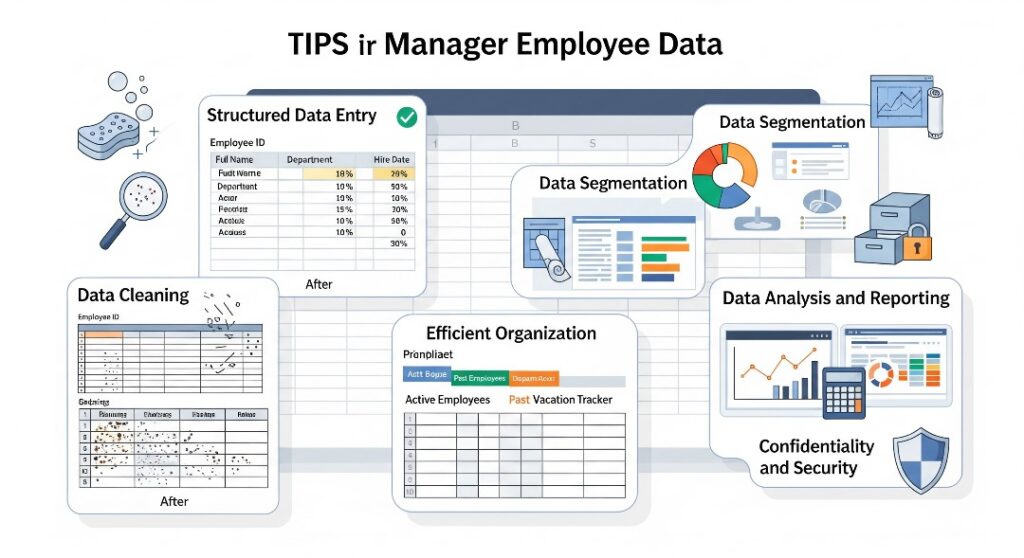
- Data Cleaning: Remove duplicates and highlight missing employee records.
- Structured Data Entry: Use drop-down lists and proper formatting.
- Efficient Organization: Use tables and structured columns for clarity.
- Data Segmentation: Analyze specific groups such as departments or age categories.
- Data Analysis & Reporting: Create dashboards and pivot tables for management insights.
- Confidentiality & Security: Apply password protection and control access to sensitive data.
Common Excel Errors & Fixes
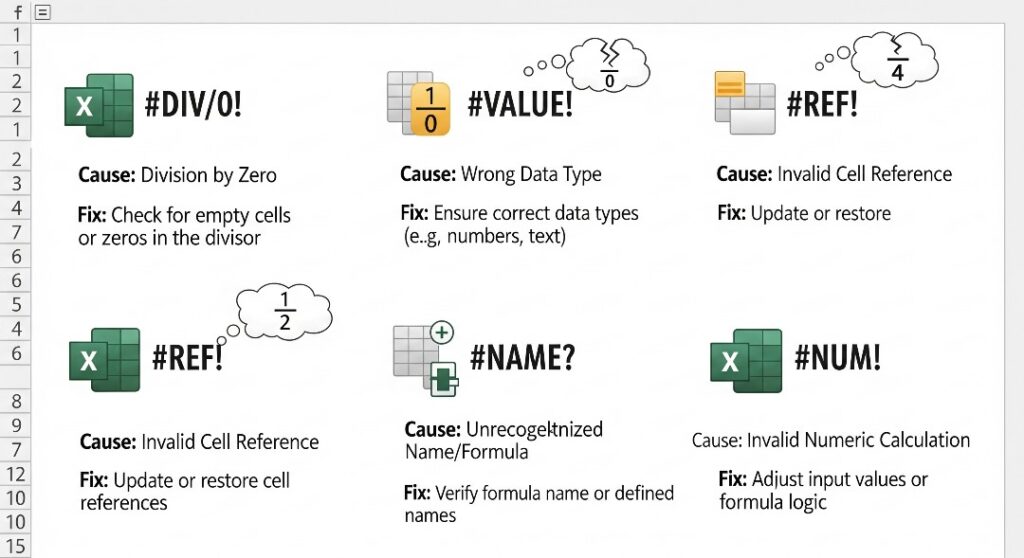
#DIV/0!– UseIFERRORto avoid division by zero.#VALUE!– Correct mismatched data types.#REF!– Prevent referencing deleted cells.#NAME?– Check formula spelling and accuracy.#NUM!– Adjust values to valid ranges.
Data Privacy Protection for HR Excel Files
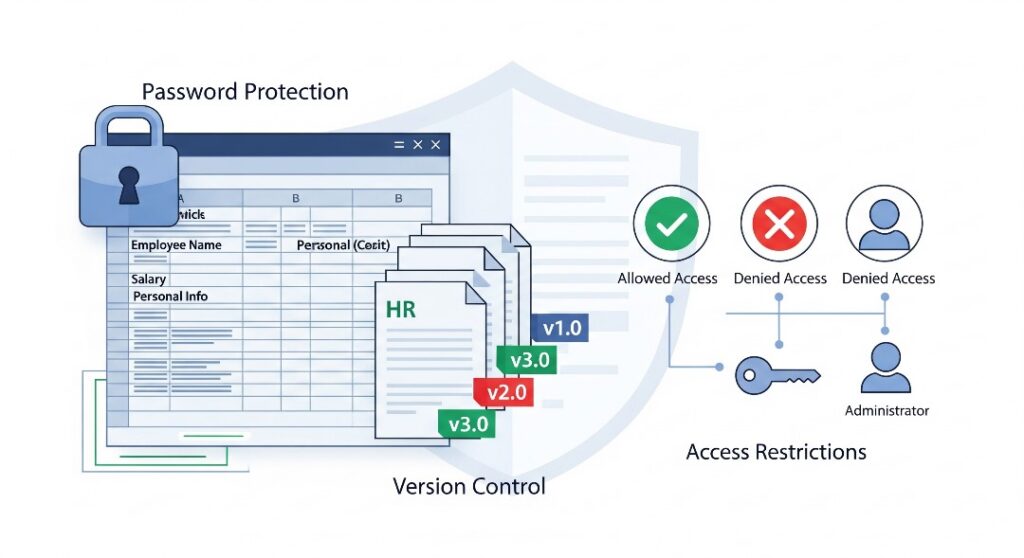
HR data is highly sensitive. To ensure confidentiality:
- Avoid storing highly sensitive information in raw sheets.
- Protect files with passwords.
- Implement version control and access restrictions.
Why Excel Skills Are Essential for Human Resource Professionals
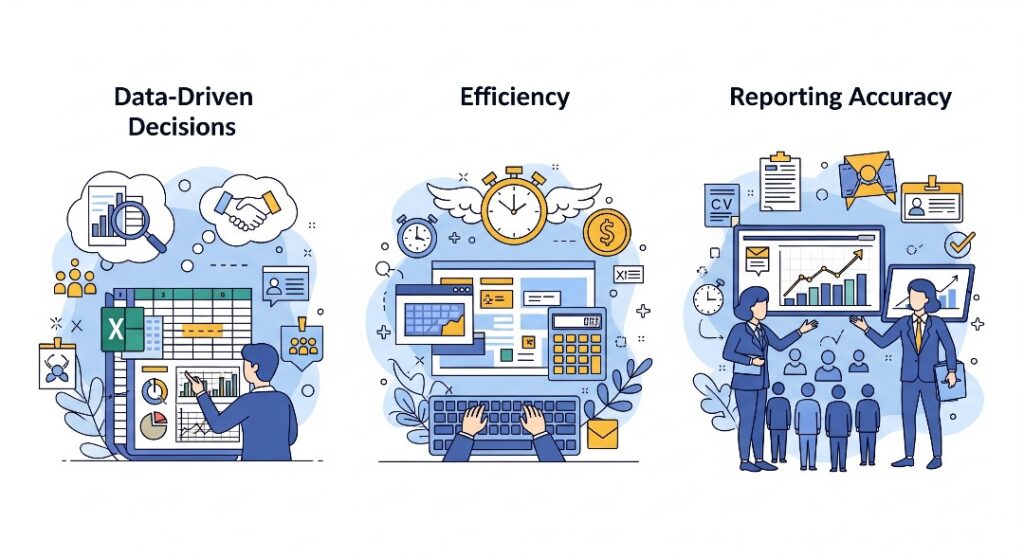
From payroll management to workforce analysis, Excel empowers HR teams to make data-driven decisions, improve efficiency, and enhance reporting accuracy. By mastering this formulas, functions, and shortcuts, HR professionals can focus more on strategic HR initiatives rather than manual data handling.
Conclusion
This Excel for HR Cheat Sheet is a must-have for anyone in Human Resources looking to improve productivity and accuracy. Whether you’re a beginner or an experienced HR manager, applying these HR Excel tips will help you manage data more effectively and make smarter workforce decisions.

